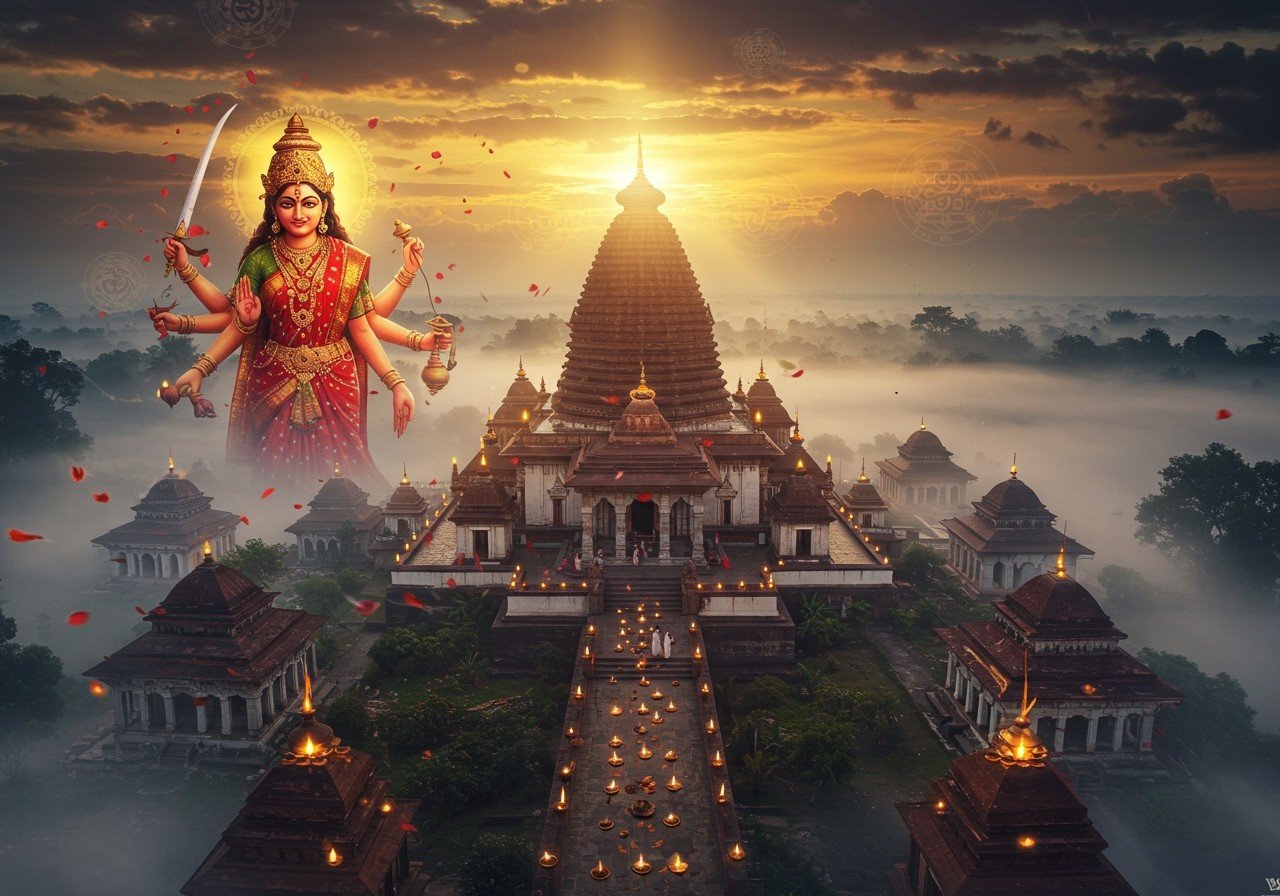
Nestled in the northeastern part of India, Assam is a land of vibrant landscapes, tea gardens, and a rich spiritual heritage. At its heart lies Kamarupa, a historical region of profound religious significance. This blog post delves into the temples, deities, and Shakti Peethas that make Kamarupa a beacon of devotion, with a special focus on the revered Kamakhya Temple.
A Journey Through Kamarupa’s History
Kamarupa, an ancient kingdom in Assam, boasts a history stretching back to pre-Vedic times. Its name is believed to be derived from the transformation of Kamadeva, the god of love. Ancient scriptures like the Kalika Purana and the Yogini Tantra frequently mention Kamarupa, highlighting its importance in Tantric traditions and Shakti worship.
The rulers of Kamarupa played a pivotal role in the region’s cultural and spiritual growth. They championed the spread of Tantric practices and integrated Kamarupa into the broader tapestry of Indian mythology. Kamarupa’s influence extended to neighboring areas, enriching their traditions and beliefs.
Kamakhya Temple: The Crown Jewel of Kamarupa
Perched atop the Nilachal Hill in Guwahati, the Kamakhya Temple stands as an architectural marvel. This temple, dedicated to Goddess Kamakhya, an incarnation of Shakti, is renowned for its Tantric traditions and deep mysticism. The temple’s unique design encompasses the sanctum sanctorum and the Garbhagriha. Legend has it that Kamakhya Devi manifested at this very spot, making it one of the 51 Shakti Peethas. The temple’s history traces back to the 8th-9th century, attracting both devotees and researchers drawn to its spiritual significance and cultural heritage.
Rituals and festivals, particularly the annual Ambubachi Mela celebrating the goddess’s menstruation, draw countless devotees. The Kamakhya Temple is a major pilgrimage site, especially famous for this unique festival.
Are you planning a visit to the Kamakhya Temple? Check out our comprehensive guide for a smooth and fulfilling pilgrimage: Kamakhya Temple Pilgrimage: Your Complete Planning Guide. For detailed information about the temple’s history, significance, and mythology, visit: Kamakhya Temple: History, Significance, and Mythology.
The Divine Beings of Kamarupa
Kamarupa is home to a diverse pantheon of deities, with a strong emphasis on Shakti and her various forms. Kamarupa Devi holds a central position, her attributes closely linked to other manifestations of Shakti like Kali and Durga. The legends surrounding these deities are deeply interwoven with local folklore.
The iconography of Kamarupa Devi is rich and vividly depicted in temple art. Other important deities such as Vishnu and Shiva are also venerated in the region, playing integral roles in rituals and temple festivals, thereby enhancing the spiritual experience.
Shakti Peethas of Kamarupa: Sacred Sites of Power
Shakti Peethas hold immense significance in Hindu mythology, marking the locations where parts of Sati’s body fell to earth. The Kamakhya Temple is one such revered site, where the goddess’s yoni (womb) is believed to have fallen, making it a potent center for Shakti worship.
Visiting these Shakti Peethas is considered a spiritually enriching experience. Pilgrims often undertake long journeys to seek blessings and participate in sacred rituals. Each Shakti Peetha in Kamarupa possesses unique qualities that contribute to its spiritual aura.
Rituals and Festivals: Expressions of Devotion
The Kamakhya Temple hosts a variety of rituals, from daily prayers to elaborate ceremonies during festivals. The Ambubachi Mela, commemorating the menstruation of Goddess Kamakhya, is a major event attracting thousands. This festival features Tantric practices and rituals highlighting the goddess’s fertility and power. You can learn more about this and other festivals here: Kamakhya Temple Festivals: Ambubachi Mela & More Celebrations.
Other important festivals like Durga Puja and Navaratri are celebrated with great enthusiasm in Kamarupa. These events involve elaborate rituals, offerings, and cultural performances, creating a vibrant and immersive experience for devotees.
Need guidance on Diwali Puja? Explore our detailed guide covering vidhi, samagri, and rituals: Diwali Puja Guide: Vidhi, Samagri, and Rituals Explained.
Cultural Significance and Modern Influence
The temples and deities of Kamarupa hold enduring cultural significance in modern Assam. Their influence permeates local traditions, arts, and crafts. Ancient practices have seamlessly integrated into contemporary life, including online rituals and offerings.
Kamarupa’s spiritual heritage fosters tourism and cultural exchange. Preservation efforts for these historical sites face ongoing challenges but remain vital for safeguarding their legacy. Modern devotees continue to uphold traditional practices, ensuring that the spiritual essence of Kamarupa thrives.
Looking for accommodation near Kamakhya Temple? Consult our guide for the best stays: Kamakhya Temple Hotels: Your Guide to the Best Stays Nearby.
Enhance your spiritual journey with authentic puja items. Discover a wide range of products, including pure camphor, at Poojn.in. We also offer a variety of sacred threads (Kalava Raksha Sutra) perfect for rituals and offerings, available at Poojn.in.
Poojn.in: Your Spiritual Companion
Poojn.in, India’s leading online store for cultural and religious goods, provides a wide selection of products to enhance your spiritual practice. Whether you’re seeking deity idols, puja essentials, or sacred texts, Poojn.in offers high-quality items delivered right to your doorstep.


